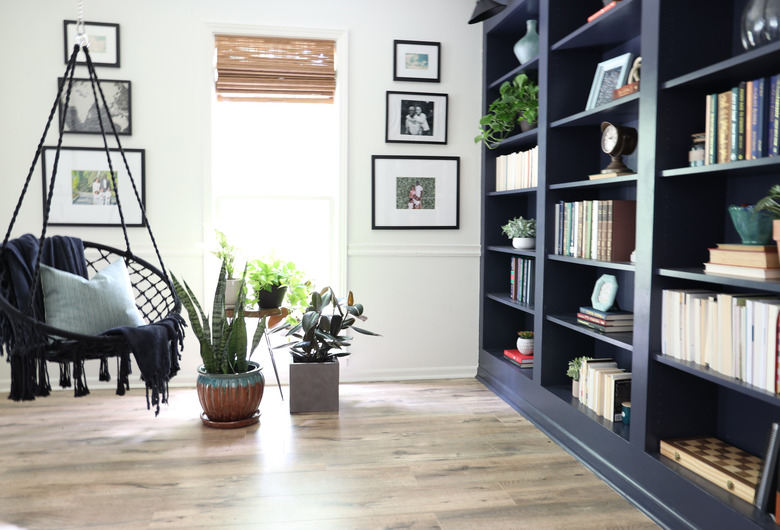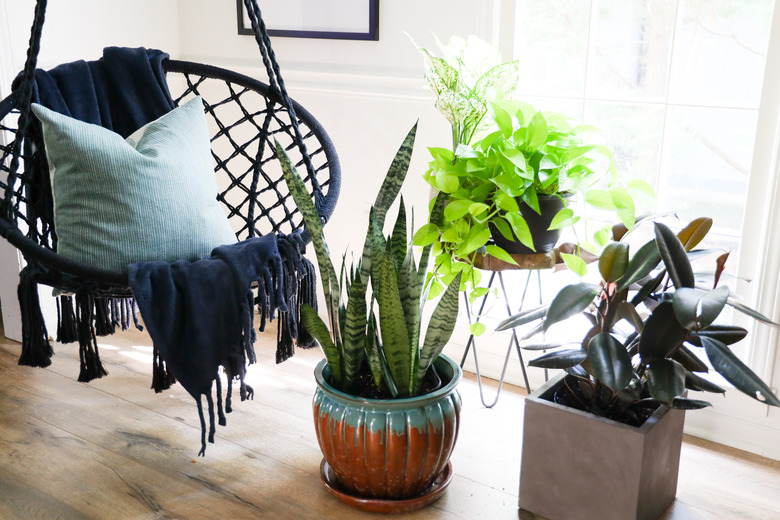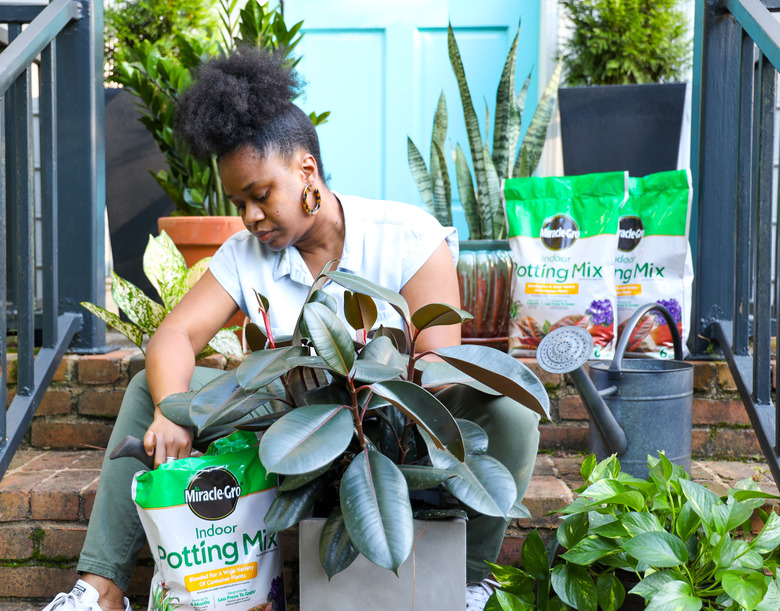Turn Your Reading Nook Into A Garden In 3 Easy Steps
Even if you have a knack for planting, just because you have success (or lack thereof) in one type of gardening doesn't mean you'll succeed in another.
That was the case for blogger Stacie Abdallah, who's been a plant lover ever since growing sunflowers with her grandmother as a young girl. One look at her Instagram (complete with raised veggie beds, potted flowers, and a matte-black greenhouse), and it's clear that her outdoor gardening skills are on point. But until recently, her impressively DIY-ed interior has been noticeably absent of greenery.
"I did have a windowsill herb garden at one point years ago, but that did not end well," Abdallah says. "I have tried several times to care for indoor plants and for some reason I just have not done well."
To change all that, Abdallah zeroed in on her reading room with the goal of adding some indoor plant life — and figuring out how to care for it, once and for all. Moody blue built-ins and only one window made the space a challenge for growing, but also made it ripe for some bright leaves. For help, she turned to Amy Enfield, horticulturist at Miracle-Gro®.
"Either I smother plants with love, or I completely neglect them," Abdallah told Enfield. Because she's already got a thriving outdoor garden to take care of (not to mention, three young boys), she was looking for plants more on the tolerate-neglect end of the spectrum.
Enfield recommended a Chinese evergreen, snake plant, rubber plant, pothos (nicknamed the perfect office plant, she adds), which are all low-maintenance and able to thrive in the moderate light in Abdallah's reading nook. Read on for the rest of Abdallah's top tips for this easy-to-recreate project.
1. Look at the light
Besides water, the most important thing a plant needs is sunlight — but not all plants need the same amount.
"Choose plants that have the greatest chance of success in whatever your home environment is," Abdallah says of her main takeaway from Enfield. "There are indoor plants for just about every type of lighting situation, and it's okay to keep trying until you figure out which plants work best in your home."
Abdallah set a few larger plants on the floor of her reading nook, and then placed smaller ones on her shelf — successfully achieving the green-jungle look she was going for. "All of these plants require very little light and are absolutely beautiful," she says. "I especially love how the pothos tends to cascade downward. I'm looking forward to seeing how beautiful that will be when it grows more."
2. Swap in the right soil
Don't be afraid to repot. "I noticed that several of the plants that I purchased had soil that looked very unhealthy," she says. "It was obvious that the nutritional needs of the plants were not necessarily being met through the soil and it needed to be changed."
That's where Miracle-Gro® Indoor Potting Mix came in. The soil contains coconut coir, which holds and releases water and helps soil easily re-wet, plus the blend is less prone to gnats* (huge plus for indoor plants).
"My favorite part of the soil was how light it felt," Abdallah says. "With my outdoor plants, I have learned quickly how important it is to have a good quality soil that gives the plant exactly what it needs, but also allows the roots to grow and the water to flow without issue. It made me feel like my plants really have a shot at being healthy and living for longer than a month under my care!"
3. Stay persistent
Like Abdallah, even if you've killed a few plants in the past, don't give up. "If you have been considering gardening at any level, I would definitely go for it," she says. " Just make sure you purchase quality products so that you give your plants the highest chance of survival."
Next up on her agenda? Deciding which room to greenify next. Says Abdallah, "I love the way this project turned out and I am already looking for where my next indoor gardening space will be!"
*Contains no compost bark, which are known to shelter fungus gnats.


